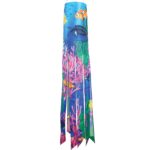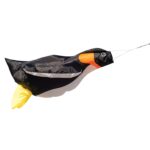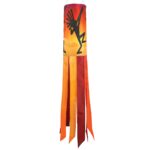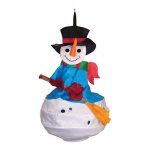Description
Bird-X Prowler Owl Windsock 3D
Item: Bird-X Prowler Owl Windsock, Bird Windsock, Owl Windsock, 3D Windsock, Owl 3D Windsock, Hunting owl windsock
- Bird-X Prowler Owl 3D Windsock, dimensions life-sized owl
- Always-moving hunting postured owl
- Never perches so birds can’t acclimate
- 4-Foot wingspan and accurate markings
- Wings flap with breeze
About the Bird-X Prowler Owl Windsock 3D:
Scare birds with a dynamic, realistic, visual predator Life-sized owl. Always-moving hunting postured owl never perches so birds can’t acclimate. 4-Foot wingspan and accurate markings. Patented airfoil technology. Resembles the ultimate, most-feared aerial predator, the Great Horned Owl, which catches and eats almost anything that moves. Tireless patrol sets up anywhere – the breeze and its natural appearance do the rest. Don’t be fooled by imitations that just sit there – without movement, they are useless. Coverage: up to 1,000 Square Feet Pests: birds (pigeons, sparrows, starlings, crows, blackbirds, grackles, seagulls, swallows, other birds), small animals and critters (skunk, rodents, rabbits and squirrels, more) Uses: parks, gardens, yards, fields, rooftops, golf courses, marinas, trees, other open areas.
Our Take:
Do you love owls? Show your love for owls by purchasing this realistic owl windsock.
Facts About Owls:
All owls are carnivorous birds of prey and live mainly on a diet of insects and small rodents such as mice, rats and hares. Some owls are also specifically adapted to hunt fish. They are very adept in hunting in their respective environments. Since owls can be found in nearly all parts of the world and across a multitude of ecosystems, their hunting skills and characteristics vary slightly from species to species, though most characteristics are shared among all species.
Owl also use as rodent control. Encouraging natural predators to control rodent population is a natural form of pest control, along with excluding food sources for rodents. Placing a new box for owls on a property can help control rodent populations (one family of hungry barn owls can consume more than 3,000 rodents in a nesting season) while maintaining the naturally balanced food chain (http://en.wikipedia.org/wiki/Owl).








